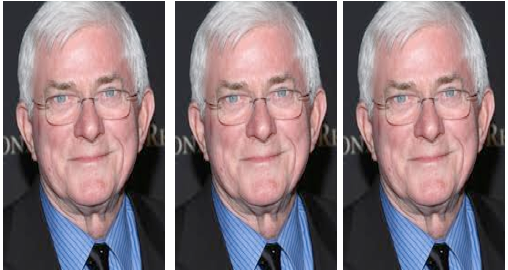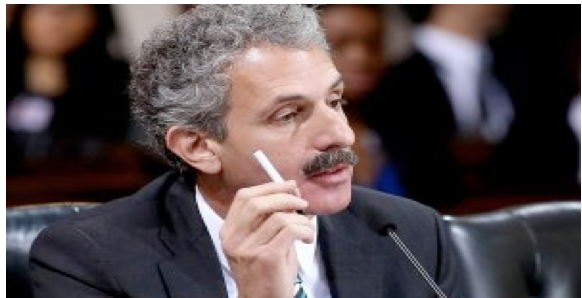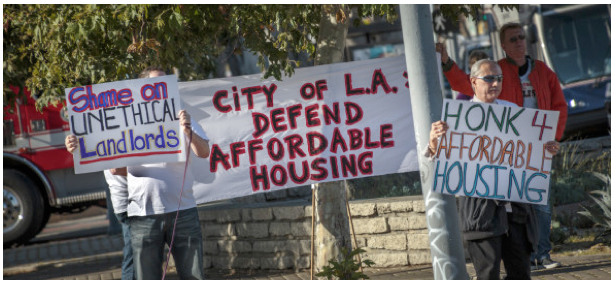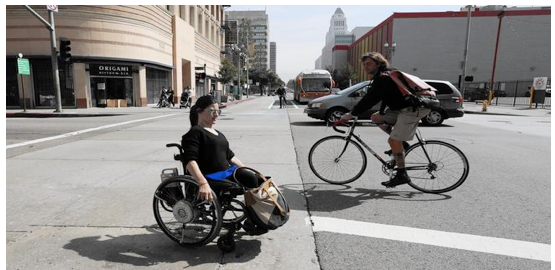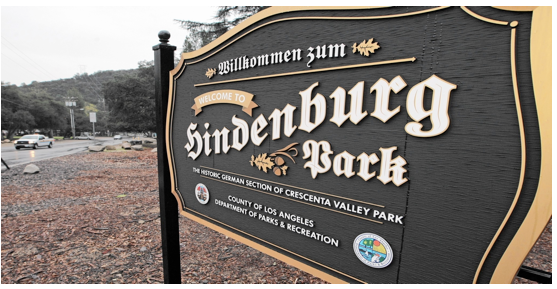FACING AN UGLY PAST-The sign says “Welcome to Hindenburg Park,” but for much of its history, Jews, people of color, and other minorities were not welcome in this piece of greenery in La Crescenta, an unincorporated area adjacent to Glendale, a Los Angeles suburb. That’s because it was the site of Nazi rallies and a Nazi youth camp during the 1930s.
In fact, the park’s real name is Crescenta Valley County Park and it is owned and operated by Los Angeles County. The new sign was erected last month, on the western edge of the park, by the Tricentennial Foundation, a German heritage organization based in the North Hills section of Los Angeles. The foundation did not erect the sign to remind local residents of the park’s horrifying history, but instead, to “preserve the historical integrity of the site,” Hans Eberhard, the foundation’s chairman, told the Glendale News-Press.
I’m a German American and, like many others residents of Los Angeles County, whose tax dollars pay for the park, I find the new sign offensive, not simply because it honors Paul von Hindenburg (a World War One hero and Germany’s president from 1925 to 1934 who appointed Adolf Hitler as German chancellor in 1933) but because it obscures the site’s ugly past.
My family, on my father’s side, left Germany and arrived in the United States in the 1860s. But they identified more as Jews than as Germans because of the anti-Semitism they were escaping in their native country. My mother’s side of the family left Poland and Lithuania in the 1880s to flee the wave of vicious and violent anti-Jewish pogroms, but they left friends and relatives behind who were later among the six millions Jews murdered by the Nazis in the Holocaust. My father served in the army in World War Two and lost many friends in battles to rid the world of Hitler and the scourge of German fascism.
Many local residents, led by the Jewish Federation of the Greater San Gabriel and Pomona Valleys, are demanding that the County remove the sign.
The park is located in the district of Supervisor Michael Antonovich, one of five members of the Board of Supervisors that governs sprawling LA County, the nation’s largest county with over 10 million residents. It was under Antonovich’s watch last year that the County Department of Parks and Recreation allowed the Tri-centennial Foundation to erect the 6-foot high sign at the park’s entrance near the corner of Honolulu and Dunsmore avenues. Visitors are greeted with the sign that reads “Willkommen zum,” followed by “Welcome to Hindenburg Park,” and below that “The Historic German Section of Crescenta Valley Park.” At the bottom of the sign are the county’s official seal and the words “Los Angeles County Department of Parks and Recreation.”
Despite the official seal, the county did not pay for the sign, which cost $2,500, according to Kaye Michelson, the department’s acting public information officer. She explained that the Tricentennial Foundation worked with the Crescenta Valley Chamber of Commerce, the Historical Society of Crescenta Valley and the Crescenta Valley Town Council to fund the sign.
Had these organizations — or Supervisor Antonovich’s office — done their research, they might have predicted that the sign would generate controversy, given the park’s history as a gathering place for American Nazis and Nazi sympathizers.
Some proponents of the sign argue that they heard no objections about it before the County approved it. “That’s because hardly anyone knew about it until it was put up,” explained Jason Moss, executive director of the Jewish Federation. “If it had been a public process, I’m sure people would have opposed it. Now that it’s up there, we’re voicing our concerns.”
An article about the new sign in the Crescenta Valley Weekly last month made no mention of the Nazi rallies held at the park.
But after several local residents brought the issue to Moss’ attention, what appeared to be a harmless historical marker became the subject of controversy. Moss and others brought their complaints to Antonovich, who tried to deflect criticism by referring them to the County Department of Parks and Recreation.
“I think there’s a way we can honor German-American culture, but also not forget what took place at that park,” Moss told me.
In response to the complaints, the county’s Human Relations Commission will hold a public hearing on Thursday, April 7, from 4-6 pm, at the Sparr Heights Senior Center, 1613 Glencoe Way, Glendale, CA 91208. The hearing officers will report back to the full commission, who will then make a recommendation to County Parks Department, which could then decide what to do.
But ultimately it will depend on whether Antonovich — who has served in that post since 1980 and has a reputation for closely monitoring activities in his district — insists that the sign be removed.
The sign’s opponents are urging people to contact Sussy Nemer, a staffperson for Antonovich ([email protected]) to voice their views about the sign.
The controversy over the sign offers a teachable moment about local history and about the dangers of ignoring bigotry in our midst. As the cliché goes, if we don’t learn from the past, we’re doomed to repeat it.
In 1925 the German American League acquired the land, named it Hindenburg Park, and maintained it as a private gathering for local German Americans, who held dances, picnics and other events there.
Had the park simply been a place where German Americans celebrated their rich and fascinating cultural heritage, it would hardly be contentious. But the site also has a much more troubling history.
Although the German American League may have been founded to celebrate German culture, it always had a political side. According to a 1937 article in Life magazine, the group was “the Nazi organization in the U.S.,” previously known as the Friends of the New Germany.
This country’s major pro-Nazi group was the German-American Bund, which sought to promote a favorable view of Nazi Germany and urged Americans to boycott Jewish-owned business. Its rallies not only featured Nazi flags but also American flags, claiming that its members were patriotic Americans. In fact, the Bund claimed that George Washington was “the first Fascist.”
As early as 1936, the Bund operated 19 Nazi-inspired youth camps across the United States. One of them was called Camp Sutter and it was located at the German-American League’s Hindenburg Park.
I spoke with Arnie Bernstein, author of the 2013 book Swastika Nation: Fritz Kuhn and the Rise and Fall of the German-American Bund. He explained that the purpose of these Bund youth camps was to “indoctrinate children in Nazi ideology.” Like most summer camps, the children participated in sports, hikes, arts and crafts and other activities. But they also were taught about Aryan supremacy and told to be loyal to the Bund, its leader Fritz Kuhn, and Adolph Hitler. They wore uniforms similar to those worn by the Hitler Youth group in Germany. They were forced to march around in the middle of the night carrying Bund and American flags, sing the Nazi anthem, give the Nazi salute, and shout “Sieg Heil” said Bernstein. As part of their camp activities, they were inculcated with Nazi propaganda. A Congressional investigation also uncovered sexual abuse between the adults and campers, Bernstein said.
In February 1939, Kuhn, who was often called the “American Fuehrer,” spoke at a pro-Nazi Bund rally at Madison Square Garden in New York City that attracted over 20,000 people. There he repeatedly referred to President Franklin D. Roosevelt as “Frank D. Rosenfeld,” called his New Deal the “Jew Deal,” and stated that “the Jews are enemies of the United States.”
Another rally was held that month at the Bund’s West Coast headquarters at 634 West 15th Street in Los Angeles in building known as the Deutsch Haus (German House). The building was a site for pro-Nazi meetings and also housed a restaurant and beer hall as well as the Aryan Bookstore, where one could purchase the Bund newspaper, Hitler’s manifesto Mein Kamp, and other Nazi literature. The Deutsch Haus also screened German anti-Semitic propaganda films with titles like “Kosher Slaughter.”
A few months later, on April 30, 1939, the Bund held a rally in Hindenburg Park, promoted as a celebration of Hitler’s birthday ten days later. Over 2,000 German-American Bund members came to hear Kuhn and West Coast Bund leader Herman Max Schwinn.
According to the Los Angeles Times: “Clad in a gray-and-black storm trooper uniform and flanked by a dozen uniformed guards, Kuhn spoke from a stage draped in red swastika banners.” The crowd cheered Kuhn and booed as a low-flying plane, sponsored by the Hollywood Anti-Nazi League, bombarded the park with thousands of anti-Hitler leaflets.
When it was Schwimm’s turn to speak, he read a telegram he had sent to President Franklin D. Roosevelt: “Do everything in your power to quarantine the United States against alien influences which are at work to drag the nation into war.” By “alien influences” he meant Jews, whom the Bund correctly believed were trying to get the Roosevelt administration and Congress to oppose Hitler’s efforts to take over Europe.
A two-minute clip from the documentary film “Rancho La Canada” includes footage of activities at Hindenburg Park, including that 1939 Nazi rally. Some of the rally’s organizers were later put on trial for sedition.
In an interview with the Los Angeles Times that week, Kuhn spouted typical Nazi ideas. Jews, he claimed held 62% of the high posts in the federal government and “have plotted to get hold of almost everything, especially in New York and Hollywood.”
That event was only one of many Bund and pro-Nazi events that took place at the park. These gatherings featured speakers from other American fascist organizations -- including the Silver Shirts, White Shirts, and Khaki Shirts — as well as the Bund.
Cal State-Northridge hosts a website and archive called “In Our Own Backyard: Resisting Nazi Propaganda in Southern California, 1933-1945” that includes photos of Nazi rallies at Hindenburg Park. One shows members of the Bund erecting a huge swastika in the park.
In December 1939, Fritz Kuhn was sentenced to two and a half to five years in prison for embezzlement, but the Bund briefly continued without him. Two years later, after the United States entered World War II against the Nazis, the Bund disappeared. In 1943, while he was serving his prison sentence, the U.S. cancelled Kuhn’s citizenship and deported him to Germany in 1945.
After the war, Hindenburg Park continued to be the site for German festivals. Southern California’s first Oktoberfest was held there in 1956.
While the German American League owned the park, a 5-foot bust of Hindenburg adorned the grounds. In 1957, Los Angeles County purchased the land from the German-American League for $91,000, and removed the bust. The Board of Supervisors also abandoned the name Hindenburg Park and incorporated that section of the park into the larger Crescenta Valley County Park.
Over the next half-century, memories of the American Nazis’ presence at the park faded. By the start of this century, few people recalled that the Glendale area had not only been a stronghold of Nazi activism but also a breeding ground for other hate groups, including the Ku Klux Klan in the 1920s and the John Birch Society in the 1950s. In the 1960s, Glendale was West Coast headquarters of the American Nazi Party. In 1962, when the KKK experienced a revival in response to the burgeoning civil rights movement, the Klan paraded down Glendale’s main thoroughfare, Brand Boulevard, with a horse brigade, marching band and burning cross. As recently as 2012, a tiny hate group called the Crescenta Valley European American Society, promoting “white identity and white pride,” had a brief presence on the internet and sponsored a European American Heritage Festival at Hindenburg Park — which generated controversy at the time — but all manifestations of this group, including its website, soon disappeared.
The La Crescenta and Glendale areas are now more diverse than in earlier years, but the scars of racism, anti-Semitism, white supremacy, and other forms of bigotry never completely heal, as reflected in the upsurge of protest after the appearance of the new “Welcome to Hindenburg Park” sign last month.
Hans Eberhard, the Tri-Centennial Foundation’s chairman, seemed either naïve or willfully ignorant about the significance of the site’s Nazi past.
He told the Glendale News-Press that people who hoisted flags bearing swastikas in the park did so because it was the German flag at the time, not because they were Nazis.
Seeking to downplay the dispute, Eberhard explained, “This is a welcome to Hindenburg Park. There’s nothing wrong with that. It’s an indication this is a historic site.”
Kaye Michelson from the LA County Department of Parks and Recreation echoed similar sentiments. “The intent was, and is, to honor the German-American heritage of the park,” she said in an interview with the Jewish Journal.
Steve Pierce, a Crescenta Valley Chamber of Commerce board member, agreed. “The sign is just recognizing the German culture that was in our community,” he told the Glendale News Press last month. “I think that’s important. I’m very in support of that.”
Mike Lawler, former president of the Historical Society of the Crescenta Valley, who has documented the area’s history of racial, ethnic, and religious bigotry, has a somewhat more nuanced view. The park’s history, he told me, is part of the “simple and recurring American story of an immigrant group celebrating their heritage as they assimilate.” But Lawler also understood why the sign has triggered a protest movement. “My overall feeling is that by burying uncomfortable events in history, we risk repeating past mistakes. Obviously, I don’t have the perspective of having been the victim of a mass genocide, so I cannot relate to the Jewish Federation’s feelings of offense. But I would hope that bringing attention to the park’s history would provide an opportunity for educating future generations about the dangers of nationalism and hate groups like the Bund.”
Bernstein, the leading historian of the German-American Bund, was quick to tell me that “most German Americans weren’t Nazis or Nazi sympathizers.” Many, he said were “ashamed of Hitler and what was going on in Germany, and strongly denounced Kuhn and his followers.”
“The Bund was a small group compared with the number of German Americans living in the United States,” he explained. “But they were loud and noisy.”
Bernstein believes that any sign or plaque erected at La Crescenta County Park should not simply celebrate local German culture but also mention that the park was the site of pro-Nazi rallies.
“This controversy isn’t about Hindenburg himself, but what the park represents,” Bernstein said. “What was going on there was pro-Hitler activity. It’s an ugly fact of history but to avoid any mention of that is to erase an important part of the park’s past, which is something that people who use the park, or whose tax dollars pay for it, should know about.”
(Peter Dreier is professor of politics and chair of the Urban & Environmental Policy Department at Occidental College. His most recent book is The 100 Greatest Americans of the 20th Century: A Social Justice Hall of Fame. This piece was first posted at HuffingtonPost.com.) Prepped for CityWatch by Linda Abrams.

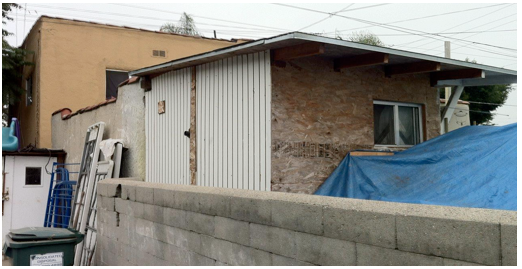
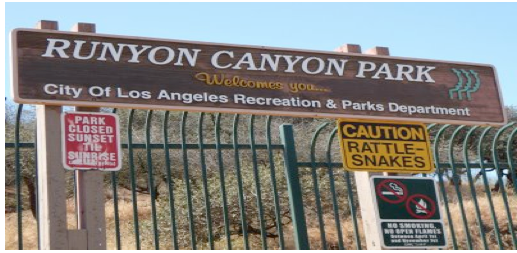



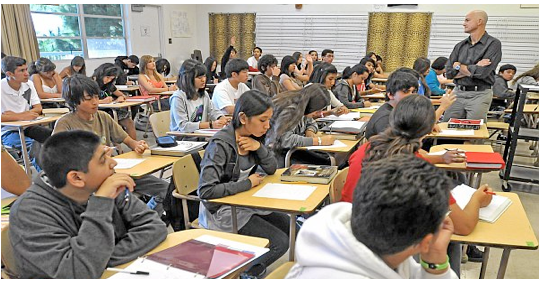
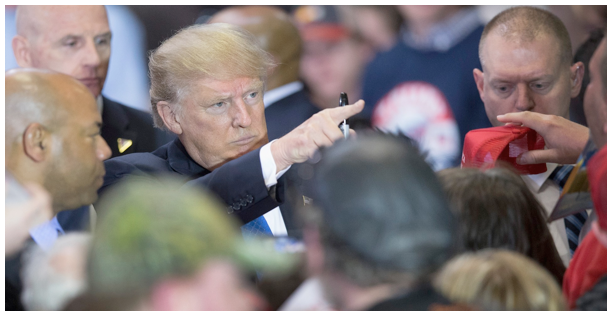
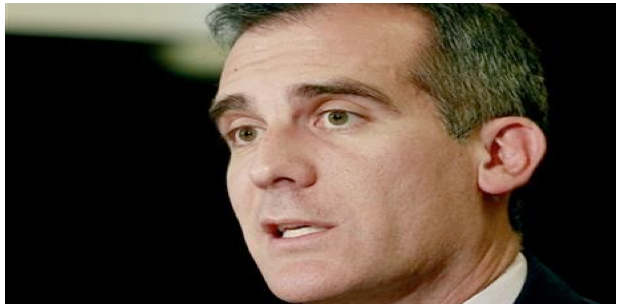
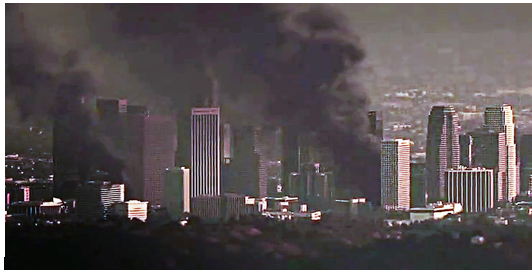
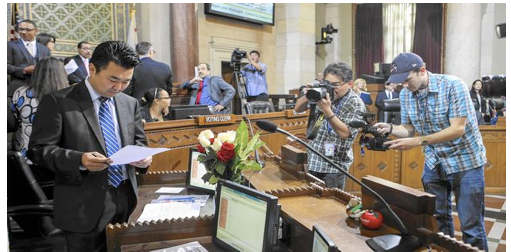
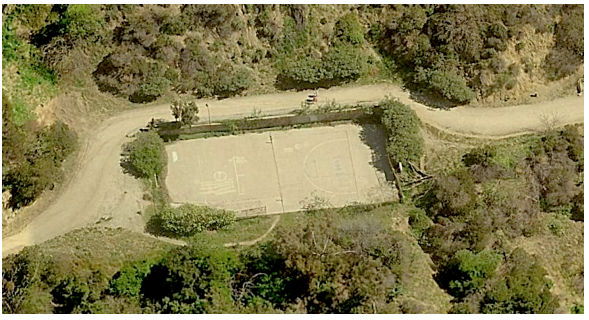

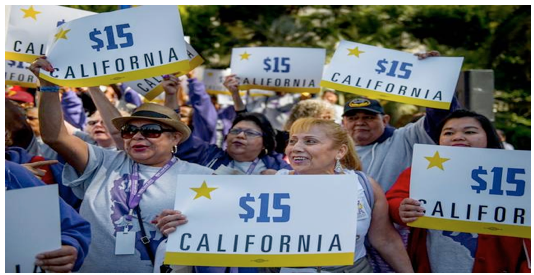


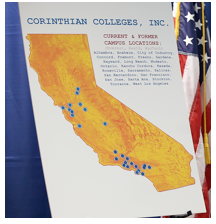 The bulk of the judgment in this case is loan forgiveness for former students. The rest is to punish the shyster Corinthian and try to deter other profiteers from creating business models that prey on hopeful students. That's a good sign.
The bulk of the judgment in this case is loan forgiveness for former students. The rest is to punish the shyster Corinthian and try to deter other profiteers from creating business models that prey on hopeful students. That's a good sign. 